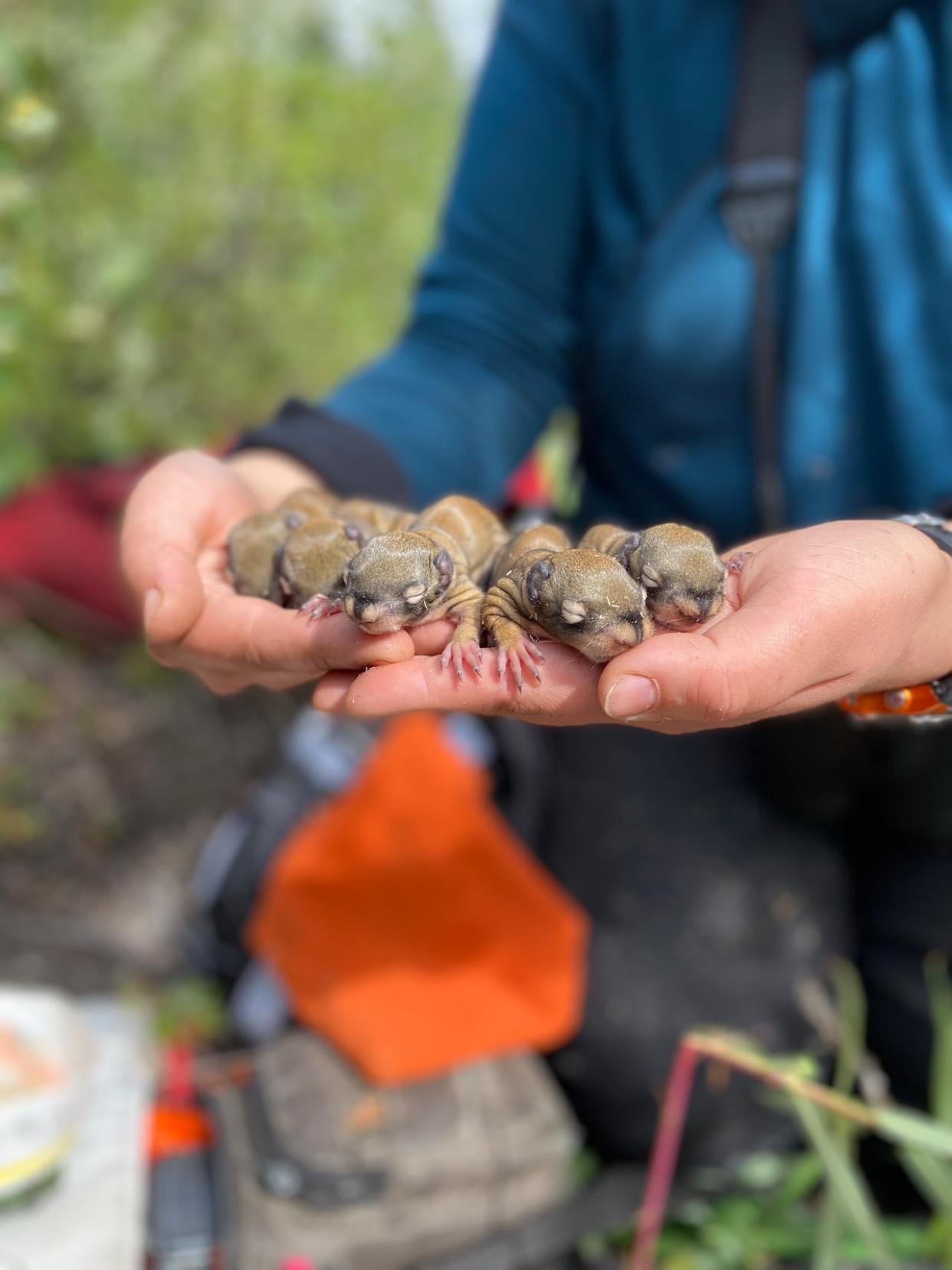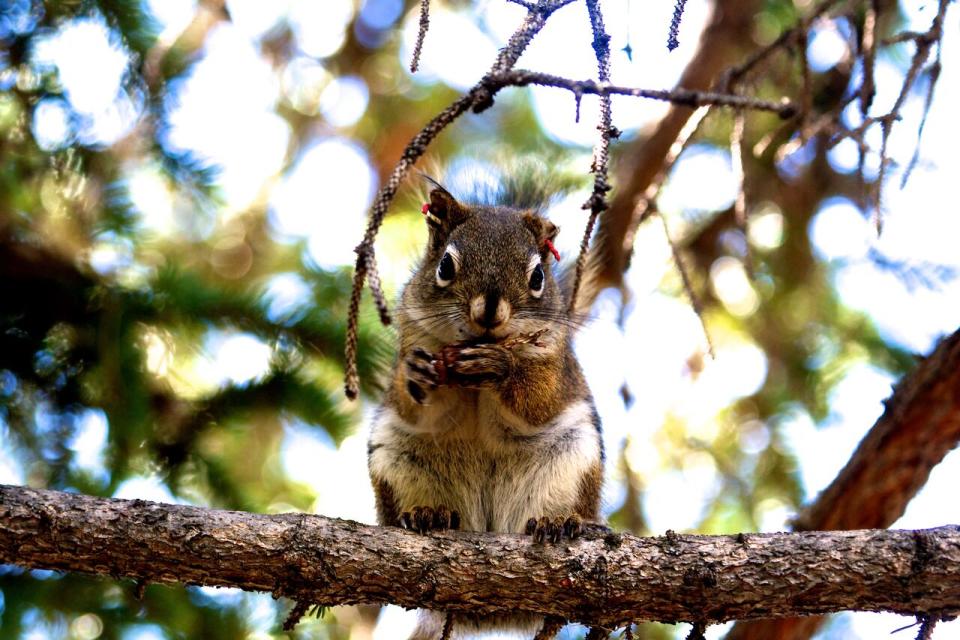Early-life adversity can mean shorter lives for Yukon's red squirrels, study finds

While red squirrels don't typically eat with utensils, being born with a silver spoon could dramatically alter their life expectancy, according to a new study based on data collected over decades in the Yukon.
The study, published by the Royal Society in April, found that among Yukon red squirrels, early years fraught with adversity can significantly affect their chances at long-term survival.
The study received funding from the National Science Foundation and the National Sciences and Engineering Research Council of Canada.
Researchers used 32 years of data collected by the Kluane Red Squirrel Project, which is based in southwest Yukon. Founded in 1987, the project studies, among other things, the impact of food supply on the health and preservation of the red squirrel species.
From 1989 to 2022, researchers with the project monitored and individually tagged 1,144 squirrels, taking a census of the entire population twice every year. The research took place in three separate study areas, including one experimental study area.
The study found that some of the trials that come with life in the North include low food availability, bitter winters, competition from siblings, and the ever-present threat of predators. And for red squirrels, the researchers say, early-life struggles could cut the animals' lifespans by roughly 14 per cent.
However, all hope is not lost for those that are born into hardship.
Researchers sought to answer the question of whether positive environmental quality in a squirrel's later life could mitigate the impact that early-life adversity has on the animal's lifespan.
"For individuals that had these really difficult early life environments, but got lucky enough to experience a food boom … in the second year of their life, we actually saw that that pattern of a shortened lifespan was mitigated," said Lauren Petrullo, an assistant professor of ecology and biology at the University of Arizona, and one of the leaders of the study.
Petrullo classified food booms, also known as mast years, as the seasons in which animals' favourite foods are super-abundant. For red squirrels, their food of choice is the seeds that come from white spruce trees.
Decades of data
Tom Jung, a senior wildlife biologist for the Yukon government, praised the study for its ability to incorporate such a large data set.
"It shows the power of having these longer-term data sets to do this," Jung said. "In the Yukon, we're really well placed in the field of ecology and wildlife management because we do have some of the longer-term data sets — not just for red squirrels, but other species."

Lauren Petrullo is a part of the Kluane Red Squirrel Project and an associate professor at the University of Arizona's department of ecology and evolutionary Biology. She says that red squirrels are adept at predicting when food booms will occur. (Submitted by Lauren Petrullo)
Food booms of white spruce seeds tend to happen every three to seven years, while the food supply in the intervening years can be slim. Petrullo said while researchers still struggle to predict when mast years will occur, red squirrels are adept at picking up cues on when food booms are set to happen.
Petrullo added that researchers came to this discovery by noticing that female squirrels' reproductive output increased in mast years as opposed to seasons with low food production.
Petrullo cautions that as global climate change makes ecological cues less reliable, squirrels could have a harder time predicting mast years.
Peanut butter proxy
In an attempt to counteract the effects of longer gaps between food booms, researchers experimented with providing peanut butter to a smaller population of red squirrels within the experimental study area.
Petrullo said that while the red squirrels with access to the peanut butter did tend to outlive their counterparts without access, the peanut butter did little to mitigate the overall effects that early-life adversity has on adult lifespans.
Petrullo adds that a central weakness of the study is the difficulty in recreating food booms, given that while not all squirrels were able to access the peanut butter, within a food boom, all squirrels are able to access white spruce seeds.

Researchers used data compiled over the span of 32 years by the Kluane Red Squirrel Project, which is based in southwest Yukon. The data set was compiled by monitoring 1,144 individually-marked red squirrels. (Ryan Taylor)
Jung questions the impact climate change could have on food abundance during mast years, and the trickling effects this could have on the red squirrel population, and their greater ecosystem over time. He encouraged the researchers to continue monitoring the red squirrel population.
"Continued monitoring is going to increase the number of questions we can ask about how food affects wildlife, and how early life trauma affects wildlife, and how changes in the ecosystem may have impacts on survival and lifespan and food webs," he said.
Petrullo said a central take-home message of the paper is that a tough beginning doesn't always determine how the rest of an animal's life is going to play out.
"Even squirrels that have really, really difficult early life environments can avoid these long-term consequences if they have a future environment that's very high quality."

 Yahoo News
Yahoo News 
